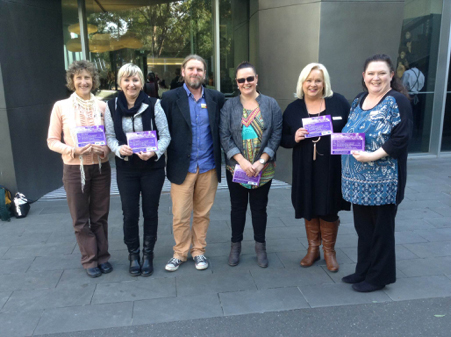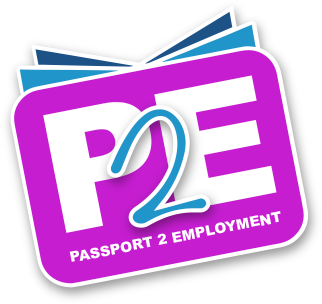In 2013, the Glenelg and Southern Grampians Local Learning and Employment Network established the Glenelg Transition Action Network (GTAN). The aim of the GTAN was to create innovative initiatives to improve the outcomes for young people with a disability and other challenges in their transition from school into further education and employment.
The GTAN, which was made up of representatives from the disability, education and community sectors, identified there was a need for a pre-employment program to assist students requiring extra support to successfully transition to life after school.
The GTAN created the Passport to Employment program (P2E) to provide support for students with their transition from school to further education, employment and community participation.
The first P2E program was held in 2014 as a partnership between local education, disability and community providers. Since this time, the program has grown significantly into other communities in Victoria and Western Australia, and in 2015 was one of five finalists in the Victorian Disability Sector Awards.

Some of the members of the Glenelg Transition Action Network at the Victorian Disability Sector Awards in 2015.
“An Ordinary Life”
The vision of the National Disability Insurance Scheme (NDIS) is to:
“Optimise the social and economic independence and full participation of people with a disability. In other words, the goal of the NDIS is to increase the opportunities for people with a disability to live an ordinary life”.
Source: Information, Linkages and Capacity Outcomes Framework
This vision has the aim of empowering people living with a disability to live the life they choose, to participate in, and make an active contribution to the community.
For this vision to become a reality, people living with a disability or other challenges must feel independent, self-determined and society must truly embrace community inclusion.
The Information Linkages and Capacity Building element (ILC) is the part of the NDIS that provides information, linkages and referrals to connect people with supports to improve their economic and social participation in their community. The ILC recognises that an investment in community education, broad based interventions, capacity building and supports is needed. This in turn sustains and strengthens informal support and promotes social and economic inclusion and meaningful participation of people living with a disability or other challenges within the wider community.
The ILC contains five key outcome areas required for a person with a disability to achieve an ‘ordinary life’:
- People with disability are connected and have the information they need to make decisions and choices.
- People with disability have the skills and confidence to participate and contribute to the community and protect their rights.
- People with disability use and benefit from the same mainstream services as everyone else.
- People with disability participate in and benefit from the same community activities as everyone else.
- People with disability actively contribute to leading, shaping and influencing their community.
Source: National Disability Insurance Scheme, ILC Outcomes

“People with disability have the same right as other members of Australian society to realise their full potential. They should be supported to participate in and contribute to social and economic life. Inclusion of, and access for, people with disability to mainstream and universal services, community based activities and other government initiatives is a shared responsibility.
…all Australian governments, non-government organisations, businesses and the wider community have a role in achieving this vision”
Source: National Disability Insurance Scheme, A Framework for Information, Linkages and Capacity Building
The P2E program was developed a number of years prior to the rollout of the NDIS, however, an independent evaluation of the program (conducted in 2018 by SED Advisory) identifies a strong correlation between the P2E program outcomes and the key activity outcomes of the ILC element of the NDIS.
| ILC Outcome | Rating | Explanation |
|---|---|---|
| Individual capacity bulding | The evaluation found strong evidence to conclude that the P2E program has increased the skills and motivation of individual program participants and presented information to suggest that the program has supported participants to contribute to the community and protect their rights. | |
| Information, Linkages and referrals | The evaluation found that the P2E program is providing accessible and relevant information to support program participants with making informed decisions and choices about their transition to life after school. All stakeholders reported that the information provided though the P2E program was of a high quality and tailored to a level appropriate for the participants. | |
| Connections and relationships | The evaluation found evidence to suggest that the P2E has increased connections between key stakeholders involved in the P2E networks and has increased information sharing between network members. The program has provided the impetus for networks to form in some sites and has increased opportunities for P2E participants to actively participate in the community. | |
| Awareness and capacity building for community and mainstream services | While the P2E was initially created to support individual capacity building, the networks established to implement the program have also led to awareness building for local businesses and community support agencies involved in the program. It is acknowledged that the program was not created to provide capacity building for community and mainstream services outside the P2E networks however there are opportunities for the program to expand capacity building and raise awareness if the program were resourced accordingly to do this. |
Source: Passport to Employment Summary Report, SED, July 2018
